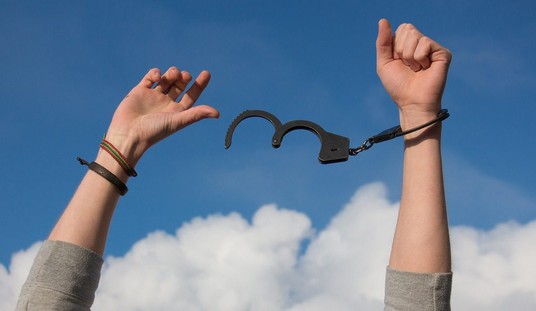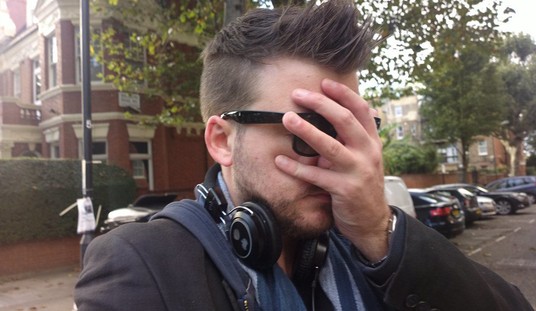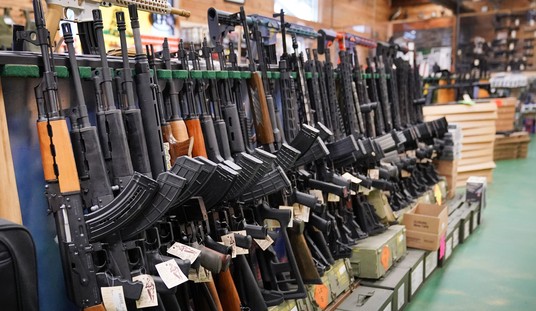After a weekend that saw shootings at protests in Austin, Texas and Aurora, Colorado, as well as a resurgence of violence in places like Richmond, Virginia, Oakland, California, and Seattle, Washington, I can’t help but wonder if we’ve turned a new corner in the civil unrest that began nearly two months ago in the wake of the death of George Floyd in Minneapolis. What we’re seeing now aren’t largely spontaneous demonstrations, protests, or incidents of looting and rioting, but more organized efforts aimed at disrupting cities, attacking law enforcement, and even attempts to spark a revolution. There are competing, and sometimes contradictory goals among the groups gathering in the streets, and while the number of demonstrators may have dramatically declined compared to protests in early June, those that are still taking to the streets weeks later appear to be far more militant in both their demands and their actions.
On today’s Bearing Arms’ Cam & Co, Stephen Gutowski of the Washington Free Beacon sits down with me to discuss whether this is the “new normal,” as well as what can be done to return some calm to American cities. I don’t think either Stephen or myself are particularly optimistic about a return to normalcy anytime soon, unfortunately, but for me anyway, I believe that there are things that local officials could do to tamp down the violence without infringing on anyone’s right to peaceably protest or keep and bear arms.
As a Second Amendment supporter, Gutowski says that he’s glad to see more Americans exercising their rights, even if he doesn’t always agree with the ideology of the guy or gal carrying the gun. He’s also growing more concerned, however, with calls for a violent revolution, whether from Boogaloo boys ready to kick off a civil war or guys like John Johsnon, aka “Grand Master Jay” with the Not F*cking Around Coalition, who vowed on Saturday to burn down the city of Louisville if officers are not arrested in the death of Breonna Taylor.
“You all look like you all need a little help. Not the kind of help that you could sing about. The kind of help that puts people in the hospital. That put people in the ground. Like they’ve been doing us,” Johnson told the crowd.
Earlier in the day Saturday, the NFAC gathered in Baxter Park to prepare for the march. While there, one member accidentally discharged a firearm, injuring three people.
An estimated 50 right-wing, mostly white, militia members also appeared downtown Saturday, separated on the east side of Fifth Street by police barriers.
Later, downtown, Johnson explicitly threatened violence if officials fail to provide answers within four weeks in the Taylor investigation. He recommended Louisvillians arm themselves and organize. Then, in call and response, he asked the crowd to repeat after him:
“I need y’all to repeat after me: if we don’t get the truth, the whole truth, and the mother****ing truth, we are going to burn this mother****er down,” he said.
Empty rhetoric? Maybe, maybe not. Clearly though, Johnson was advocating violence, not in self-defense, but as retaliation for what he sees as the slow-walking of the investigation into the raid on Taylor’s home that led to her killing by Louisville police. I’ll leave it up to a prosecutor to decide if Johnson’s comment constituted a “true threat” that would not be protected by the First Amendment or an example of political rhetoric, which would be protected speech, but at the very least it’s another troubling sign that the unrest isn’t going away anytime soon.
So what can be done to keep the peace, or at least attempt to restore some calm? The most important thing that cities can do is to both explain the law and enforce it. It’s time to put an end to protests that shut down city streets and interstates, and if that requires making a large number of arrests, so be it. The incidents in Aurora, Colorado and Austin, Texas both involved protests that had blocked traffic, and both drivers in the incidents told police that they were in fear for their lives and trying to escape. In Austin, that led to the driver of the vehicle firing five shots, killing a protester. In Aurora, it led to a protester firing shots at the driver, but hitting two other protesters instead.
It’s up to officials in these cities to not only protect the First Amendment rights of peaceful protesters, but to protect the community at large as well. Even the ACLU acknowledges that demonstrators don’t have the right to impede traffic, so why can’t officials like Mayor Steve Adler in Austin do the same? Want to protest? Go for it, but you’re not taking over any more intersections or interstates.
Instead, Adler’s complaining that there are too many guns.
“You know, we have a protester that ended up getting killed, and that’s horrific. I am taken by the fact that in that split moment, in that second, we had three different guns that were at play,” the mayor explained. “We had eight shots, and, my, we have too many guns and we have to do better. I think just generally speaking, as a society and taking guns off the streets like this.
Rather than embracing gun control, Adler should be thinking about crowd control. After all, there are far more legally owned guns in Austin than there are protesters shutting down traffic and surrounding cars. It’s also legal to own a firearm in Austin, Texas. It’s illegal to flood the streets with protesters and prevent people from leaving the area. Adler doesn’t need to get “guns off the streets,” he needs to get people illegally protesting off of the streets instead. Protest at City Hall or outside of the Austin police headquarters all you want, but keep the streets clear. That may not solve every problem, but it would be a start, and it would definitely help to keep the peace.








Join the conversation as a VIP Member